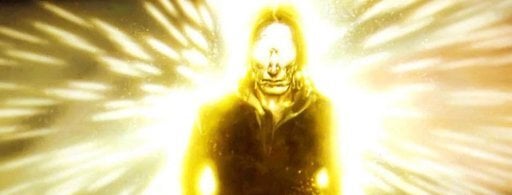-
Posts
913 -
Joined
-
Last visited
-
Days Won
61
Everything posted by Shady1
-
I can help you discord : shady.lua
-
function disableWeaponControls() toggleControl(source, "fire", false) toggleControl(source, "aim_weapon", false) toggleControl(source, "next_weapon", false) toggleControl(source, "previous_weapon", false) end addEventHandler("onPlayerJoin", root, disableWeaponControls) https://wiki.multitheftauto.com/wiki/ToggleControl
- 1 reply
-
- 1
-

-
HTTP server file mismatch! sorunu, illaki bir kerede olsa bu sorunu yaşadığınızda tek yapmanız gereken %99 çözüm olan mta clientini 1 kereliğine tekrardan başlatmanız gerekmektedir, eğer bu işe yaramazsa MTA dosya konumundan client tarafında yüklenilen server dosyalarını silin ve MTA'yı 1 kereliğine yönetici olarak çalıştırın, bu sorun düzelecektir, eğer sunucu sahibiyseniz bu sorunu yaşamak istemezseniz scriptin meta.xml tarafında düzenlemeler yapmanızı tavsiye ediyorum, örneğin <script src="server.lua" type="server" /> ise server.lua tarafını servers.lua gibi yapabilirsiniz ve dosya ismini değiştirmenizi öneririm, bu sorun %99 çözüm odaklıdır konuyla ilgili github bağlantısı : https://github.com/multitheftauto/mtasa-blue/issues/1340#issuecomment-719798067
-
local theVehicles = {} local spamTick = 0 local isRobbed = false function findVehsToRob(player) local vehicle = getNearestElement(player, "vehicle", 100) if (getTickCount() - spamTick < 100000) then outputChatBox("You are robbing a vehicle already", player, 255, 0, 0) return false end if isRobbed then return end spamTick = getTickCount() if (vehicle) then local x, y, z = getElementPosition(vehicle) local rx, ry, rz = getElementRotation(vehicle) local model = getElementModel(vehicle) robVeh = createVehicle(model, x, y, z) destroyElement(vehicle) setElementRotation(robVeh, rx, ry, rz) setVehicleLocked(robVeh, true) theVehicles[#theVehicles + 1] = robVeh outputChatBox("You're attempting to steal this vehicle, complete your tasks !", player, 0, 128, 0) triggerClientEvent(player, "sendTableToClient", player, theVehicles) addEventHandler("onVehicleStartEnter", robVeh, startRobbery) addEventHandler("onVehicleEnter", robVeh, taskOnEnter) isRobbed = true else outputChatBox("There is no nearby vehicle to steal", player, 255, 255, 255) end end addCommandHandler("robvehicle", findVehsToRob)
-
server is activated Server IP Address : mtasa://91.134.166.75:22013
-
yes actually we can use some math methods in this, here I will show an example -- The function rounds up a number and then truncates the decimal places. function roundUpAndTruncate(number) -- Round number up local roundedNumber = math.ceil(number) -- The whole number (before truncating the decimal places) local integerPart = math.floor(roundedNumber) return integerPart end -- For example local number1 = 232.98266601563 local number2 = 232.49445450000 local number3 = 232.50000000000 local result1 = roundUpAndTruncate(number1) local result2 = roundUpAndTruncate(number2) local result3 = roundUpAndTruncate(number3) print("Case 1 - Result: " .. result1) print("Case 2 - Result: " .. result2) print("Case 3 - Result: " .. result3)
-
I understand your problem and I think I can say that it is related to the server mods you are trying to log in, for this you should first contact the administrators of the server you are trying to log in.
-
you can use the getPlayerSerial function to the player's serial ID.
-
Hello, I cannot provide support for this issue in this category, so I will send you a link, if you describe your problem in a more descriptive way, I will help you. https://forum.multitheftauto.com/forum/83-client/
-
files may conflict with each other
-
hi if your problem still persists download MTADiag and wait for the scan, then post the pastebin URL here Please run MTADiag so we can investigate your issue in more detail: https://mtasa.com/mtadiag
-
hello, if your problem is not solved and still persists, please read my message below and take the necessary actions "Check to see if you have software for your mice or keyboard that shares the same functionality as autohotkey or similar"
-
hello, if your problem is not solved and still persists, please read my message below and take the necessary actions Offset = 0x003C91CC : Out of video memory. This can happen on servers with unoptimized mods and (faulty) scripts that abuse video memory, or even when you have a powerful graphics card in case the stuff on a server is extremely unoptimized so that it starts hitting GTA limits. If you have a powerful graphics card and more players suffer from this crash type, inform the server owner of this problem as it probably means their scripters & designers don't know what they are doing.
-
If you usually have problems in this way, I will tell you some of the methods you need to do, if the problem still persists, read my comment at the bottom and continue the process. Firstly, I do not recommend using the GTA:SA Crack version and you should not have the GTA:SA file without mods. hi if your problem still persists download MTADiag and wait for the scan, then post the pastebin URL here Please run MTADiag so we can investigate your issue in more detail: https://mtasa.com/mtadiag
-
hi download MTADiag and wait for the scan, then post the pastebin url here Please run MTADiag so that we can investigate your issue further: https://mtasa.com/mtadiag
-
I'm here to share an explanation again, I've been after reviving this project for a long time, so I continue to develop the old GTA:SA DayZ version project, we share updates on our discord server, if you still want to take part in this project, you can join our discord server for detailed explanations. Discord : https://discord.gg/qGszZbZDcX MTA Updates : -Toplist -Stats -Achievements -Level(RPG)/skills -Rank -VIP Features -Infrastructure arrangements -Rewards -Anti-Cheat(Log system) -and some GTA:SA notifications and some mysterious events that will enhance the enjoyment of the game, i.e. easter eggs,a total of more than 50 secret-events on the map . (discord for pictures and examples)
-
that's true
-
https://wiki.multitheftauto.com/wiki/GetKeyState and https://wiki.multitheftauto.com/wiki/CancelEvent
-
but I created a piece of code for you, maybe it will help you, local vehicleChecker function checkVehiclesInWater() for _,vehicle in ipairs(getElementsByType("vehicle")) do if isElementInWater(vehicle) then destroyElement(vehicle) end end end vehicleChecker = setTimer(checkVehiclesInWater, 4000, 0) I don't understand exactly what you are trying to do, I didn't understand anything when I examined your code


.thumb.png.29edd9cc38351c52f17256b491c769a1.png)
